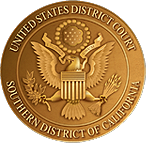
JPEG is a commonly used method of lossy compression for digital images, particularly for those images produced by digital photography. The degree of compression can be adjusted, allowing a selectable tradeoff between storage size and image quality. JPEG typically achieves 10:1 compression with little perceptible loss in image quality. Since its introduction in 1992, JPEG has been the most widely used image compression standard in the world, and the most widely used digital image format, with several billion JPEG images produced every day as of 2015.

Asure Software is a software company. Prior to September 13, 2007, the company was known as Forgent Networks. After rebranding as Asure Software, the company expanded into offering human capital management (HCM) solutions, including payroll, time & attendance, talent management, human resource management, benefits administration and insurance services.
A software patent is a patent on a piece of software, such as a computer program, libraries, user interface, or algorithm.

Eolas is a United States technology firm formed as a spin-off from the University of California, San Francisco (UCSF), in order to commercialize UCSF's patents for work done there by Eolas' co-founders, as part of the Visible Embryo Project. The company was founded in 1994 by Dr. Michael Doyle, Rachelle Tunik, David Martin, and Cheong Ang from the UCSF Center for Knowledge Management (CKM). The company was created at the request of UCSF, and was founded by the inventors of the university's patents.
Patent infringement is the commission of a prohibited act with respect to a patented invention without permission from the patent holder. Permission may typically be granted in the form of a license. The definition of patent infringement may vary by jurisdiction, but it typically includes using or selling the patented invention. In many countries, a use is required to be commercial to constitute patent infringement.

Stac Electronics, originally incorporated as State of the Art Consulting and later shortened to Stac, Inc., was a technology company founded in 1983. It is known primarily for its Lempel–Ziv–Stac lossless compression algorithm and Stacker disk compression utility for compressing data for storage.
In international law and business, patent trolling or patent hoarding is a categorical or pejorative term applied to a person or company that attempts to enforce patent rights against accused infringers far beyond the patent's actual value or contribution to the prior art, often through hardball legal tactics. Patent trolls often do not manufacture products or supply services based upon the patents in question. However, some entities which do not practice their asserted patent may not be considered "patent trolls" when they license their patented technologies on reasonable terms in advance.
NTP, Inc. is a Virginia-based patent holding company founded in 1992 by the late inventor Thomas J. Campana Jr. and Donald E. Stout. The company's primary asset is a portfolio of 50 US patents and additional pending US and international patent applications. These patents and patent applications disclose inventions in the fields of wireless email and RF Antenna design. The named inventors include Andrew Andros and Thomas Campana. About half of the US patents were originally assigned to Telefind Corporation, a Florida-based company partly owned by Campana.
There are four overriding requirements for a patent to be granted under United Kingdom patent law. Firstly, there must have been an invention. That invention must be novel, inventive and susceptible of industrial application.
This is a list of legal terms relating to patents. A patent is not a right to practice or use the invention, but a territorial right to exclude others from commercially exploiting the invention, granted to an inventor or his successor in rights in exchange to a public disclosure of the invention.
Double patenting is the granting of two patents for a single invention, to the same proprietor and in the same country or countries. According to the European Patent Office, it is an accepted principle in most patent systems that two patents cannot be granted to the same applicant for one invention. However, the threshold for double patenting varies from jurisdiction to jurisdiction.

Aerotel v Telco and Macrossan's Application is a judgment by the Court of Appeal of England and Wales. The judgment was passed down on 27 October 2006 and relates to two different appeals from decisions of the High Court. The first case involved GB 2171877 granted to Aerotel Ltd and their infringement action against Telco Holdings Ltd and others. The second case concerned GB application 2388937 filed by Neal Macrossan but refused by the UK Patent Office.

Alcatel-Lucent v. Microsoft Corp., also known as Lucent Technologies Inc. v. Gateway Inc., was a long-running patent infringement case between Alcatel-Lucent and Microsoft litigated in the United States District Court for the Southern District of California and appealed multiple times to the United States Court of Appeals for the Federal Circuit. Alcatel-Lucent was awarded $1.53 billion in a final verdict in August 2007 in the U.S. District Court for the Southern District of California in San Diego. The damages award was reversed on appeal in September 2009, and the case was returned for a separate trial on the amount of damages.
Opposition to software patents is widespread in the free software community. In response, various mechanisms have been tried to defuse the perceived problem.
Microsoft Corp. v. AT&T Corp., 550 U.S. 437 (2007), was a United States Supreme Court case in which the Supreme Court reversed a previous decision by the Federal Circuit and ruled in favor of Microsoft, holding that Microsoft was not liable for infringement on AT&T's patent under 35 U.S.C. § 271(f).
Microsoft has been involved in numerous high-profile legal matters that involved litigation over the history of the company, including cases against the United States, the European Union, and competitors.
Lempel–Ziv–Stac is a lossless data compression algorithm that uses a combination of the LZ77 sliding-window compression algorithm and fixed Huffman coding. It was originally developed by Stac Electronics for tape compression, and subsequently adapted for hard disk compression and sold as the Stacker disk compression software. It was later specified as a compression algorithm for various network protocols. LZS is specified in the Cisco IOS stack.
Article One Partners (AOP) is an online prior art search and intellectual property research crowdsourcing community. AOP was acquired by RWS Group in October 2017 and the AOP Connect crowdsourcing platform is now part of the IP Research group within RWS. RWS IP Research provides crowdsourced prior-art-search services by utilizing an online research community. The company's President stated that, as of June 30, 2018, AOP comprises "more than 40,000 in over 170 countries."
The smartphone wars or smartphone patents licensing and litigation refers to commercial struggles among smartphone manufacturers including Sony Mobile, Google, Apple Inc., Samsung, Microsoft, Nokia, Motorola, Huawei, LG Electronics, ZTE and HTC, by patent litigation and other means. The conflict is part of the wider "patent wars" between technology and software corporations. The patent wars occurred because a finished smartphone might involve hundreds of thousands of patents.
The following outline is provided as an overview of and topical guide to patents:






